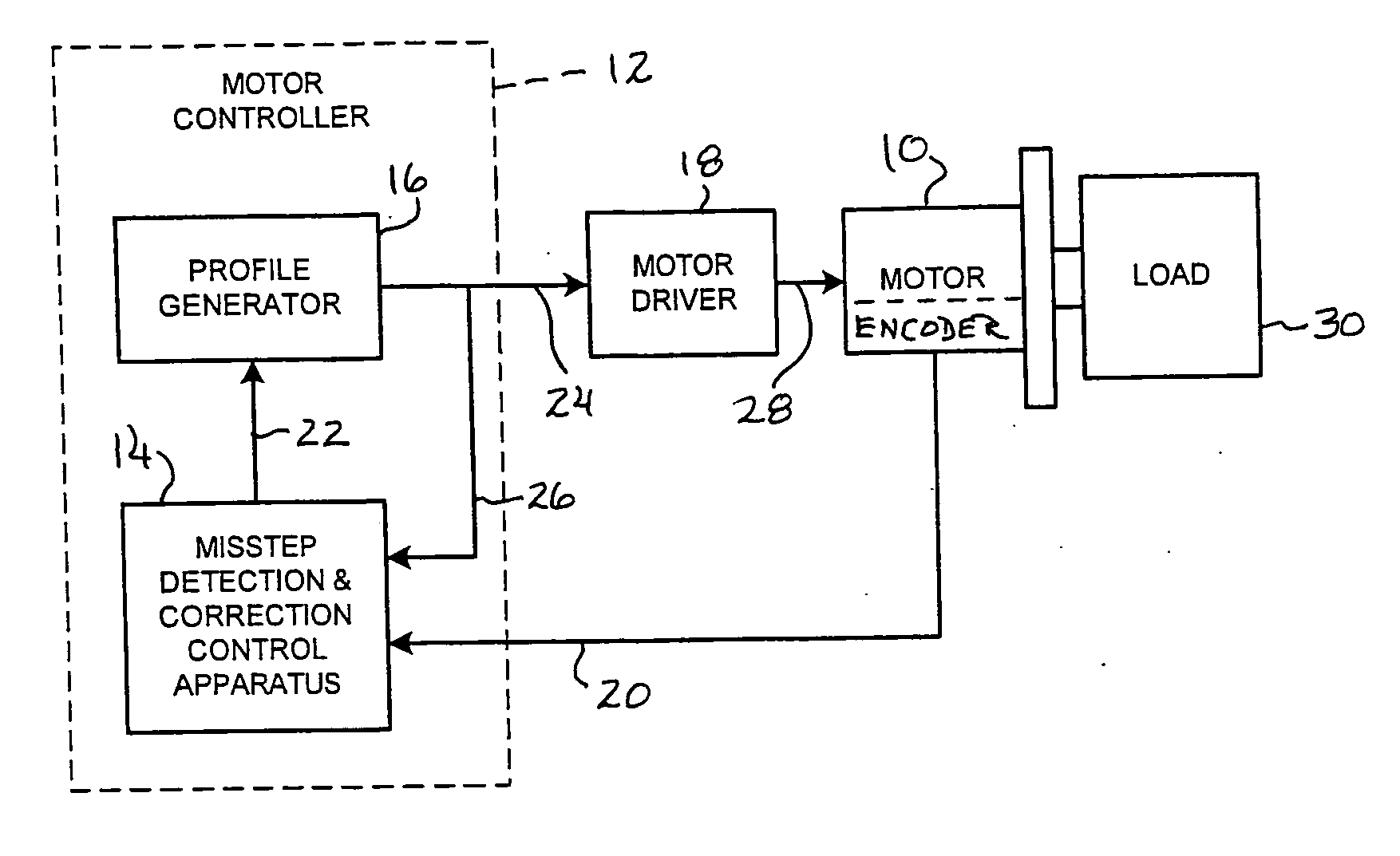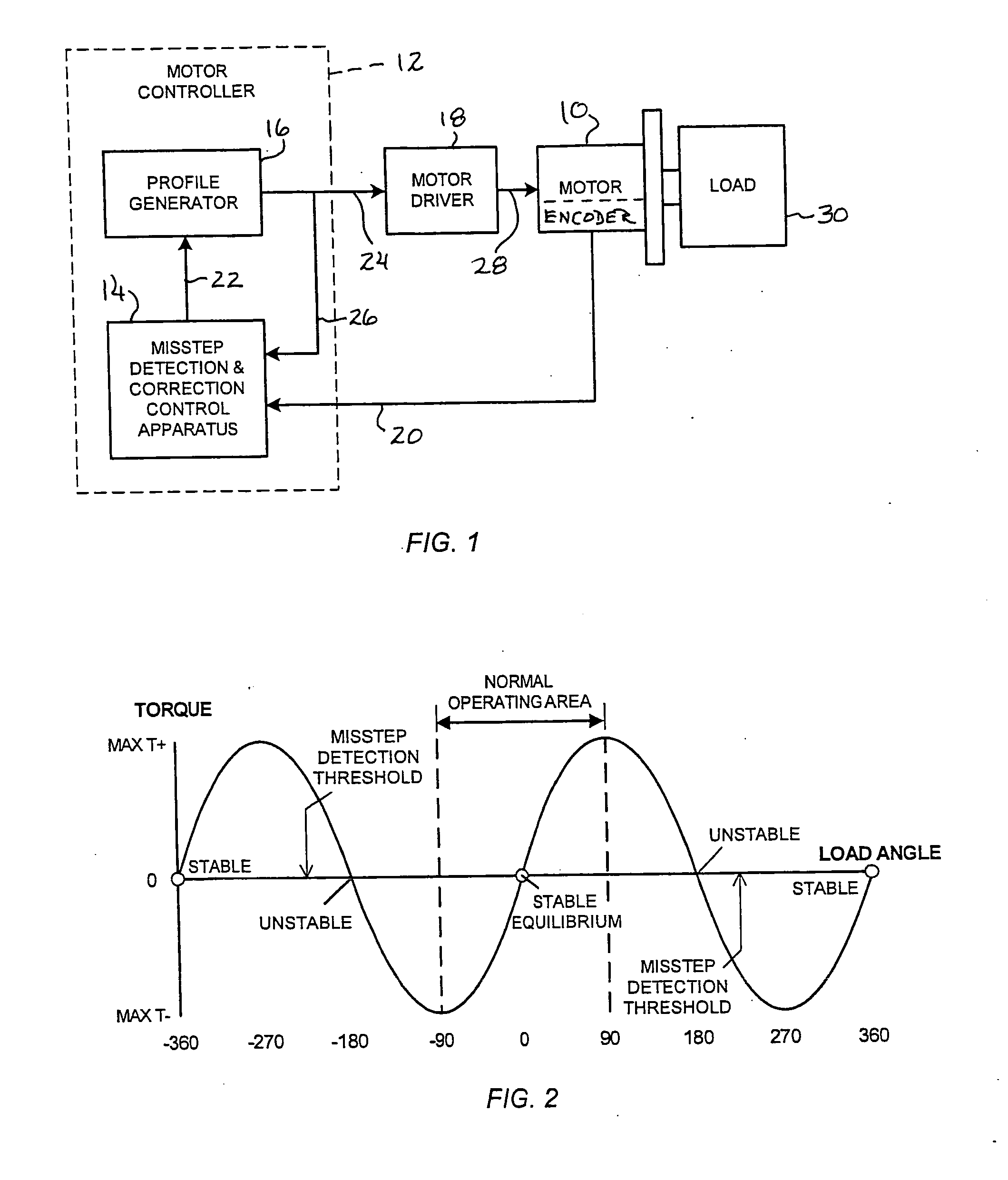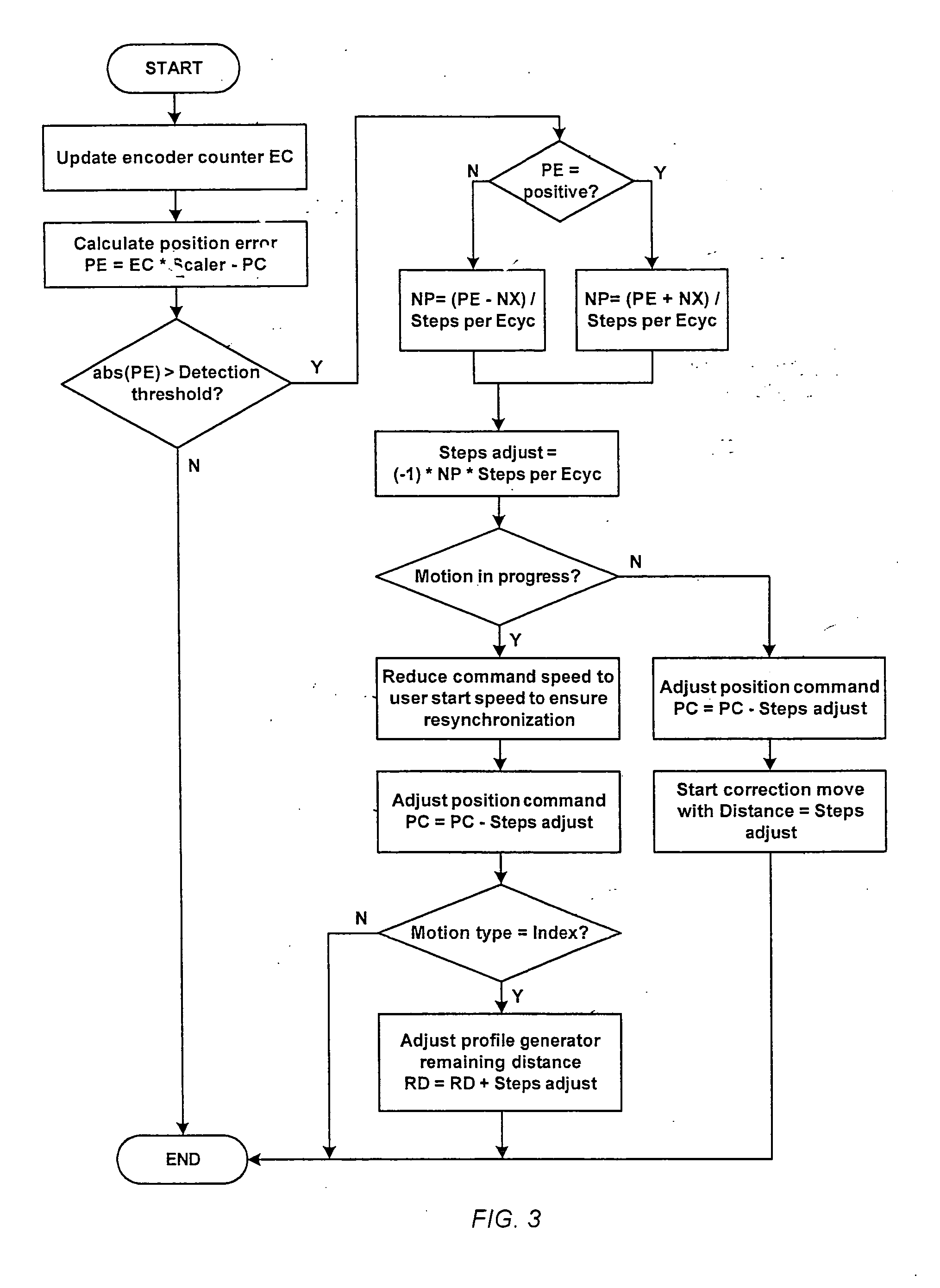Method and apparatus for misstep detection and recovery in a stepper motor
a stepper motor and misstep detection technology, applied in the direction of electrical equipment, control systems, dynamo-electric converter control, etc., can solve the problems of reducing the probability of missteps (i.e., electrical cycles, slipping or losing poles) during operation, and entail significant drawbacks in actual positioning capability,
- Summary
- Abstract
- Description
- Claims
- Application Information
AI Technical Summary
Benefits of technology
Problems solved by technology
Method used
Image
Examples
example one
[0061]The stepper motor resolution is set for commutation at 10,000 steps per revolution, equivalent to 200 steps per electrical cycle and 50 steps (scaling factor) per encoder count. The misstep detection threshold is set at plus and minus 225° (defining the limits of the load angle value range for normal motor operation), and the offset or bias value (NX) is 75 steps (200 steps per electrical cycle times F / 360°, where F has the empirically assigned value 135°, as discussed above). The profile generator of the motor system is programmed to generate a trapezoidal motion in the positive direction with an Index distance of 200,000 steps, a running velocity of 1,000 rpm, and a starting speed of 50 rpm.
Part A (No Misstep)
[0062]The first commanded position (PC) is arbitrarily deemed to be 10 revolutions away from the starting position of the rotor (i.e., 100,000 steps). If the encoder counter (EC) contains a value of 2,000 counts [10 revolutions*200 counts / revolution], the system would h...
example two
[0069]The stepper motor resolution is set for commutation at 200 steps per revolution, equivalent to four steps per electrical cycle and a scaling factor of one step per encoder count. The misstep detection threshold is again set at plus and minus 225°, equivalent here to two motor steps (four steps per electrical cycle*225° / 360°, with the 0.5 step remainder being ignored); the bias value (NX) is one step (four steps per electrical cycle times 135° / 360°, with the 0.5 step remainder again being ignored). In this Example, a relatively slow processor is employed, with access to the encoder, for signal sampling, being had at one-millisecond intervals. The profile generator of the system is programmed to generate a trapezoidal motion in the positive direction, with an Index distance of 5,000 steps, a running velocity of 1,000 rpm, and a starting speed of 50 rpm.
[0070]The first commanded position (PC) is deemed to be 11 revolutions away from the starting position of the rotor (i.e., 2,200...
PUM
 Login to View More
Login to View More Abstract
Description
Claims
Application Information
 Login to View More
Login to View More - R&D
- Intellectual Property
- Life Sciences
- Materials
- Tech Scout
- Unparalleled Data Quality
- Higher Quality Content
- 60% Fewer Hallucinations
Browse by: Latest US Patents, China's latest patents, Technical Efficacy Thesaurus, Application Domain, Technology Topic, Popular Technical Reports.
© 2025 PatSnap. All rights reserved.Legal|Privacy policy|Modern Slavery Act Transparency Statement|Sitemap|About US| Contact US: help@patsnap.com



